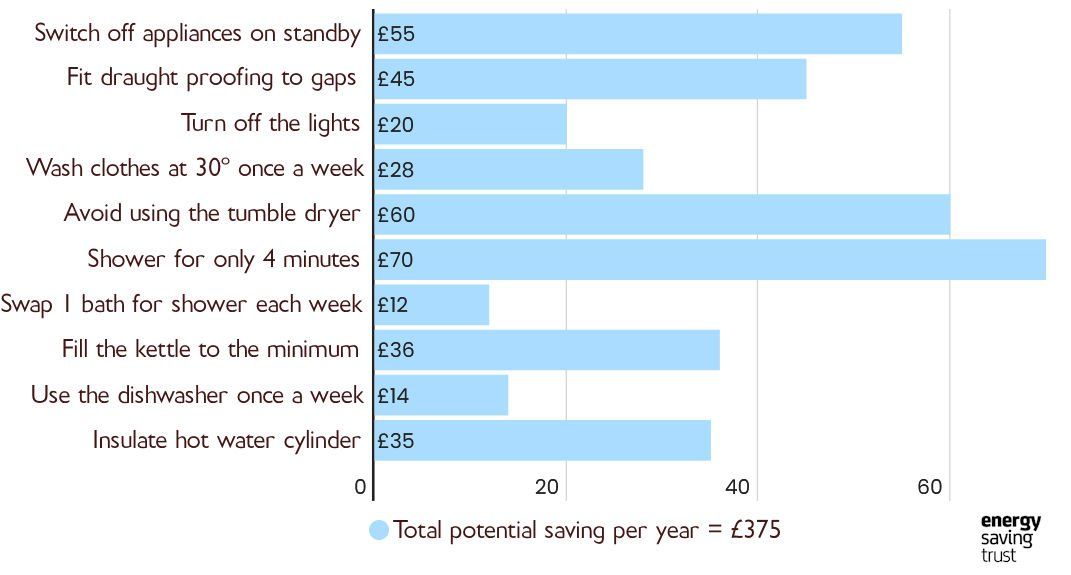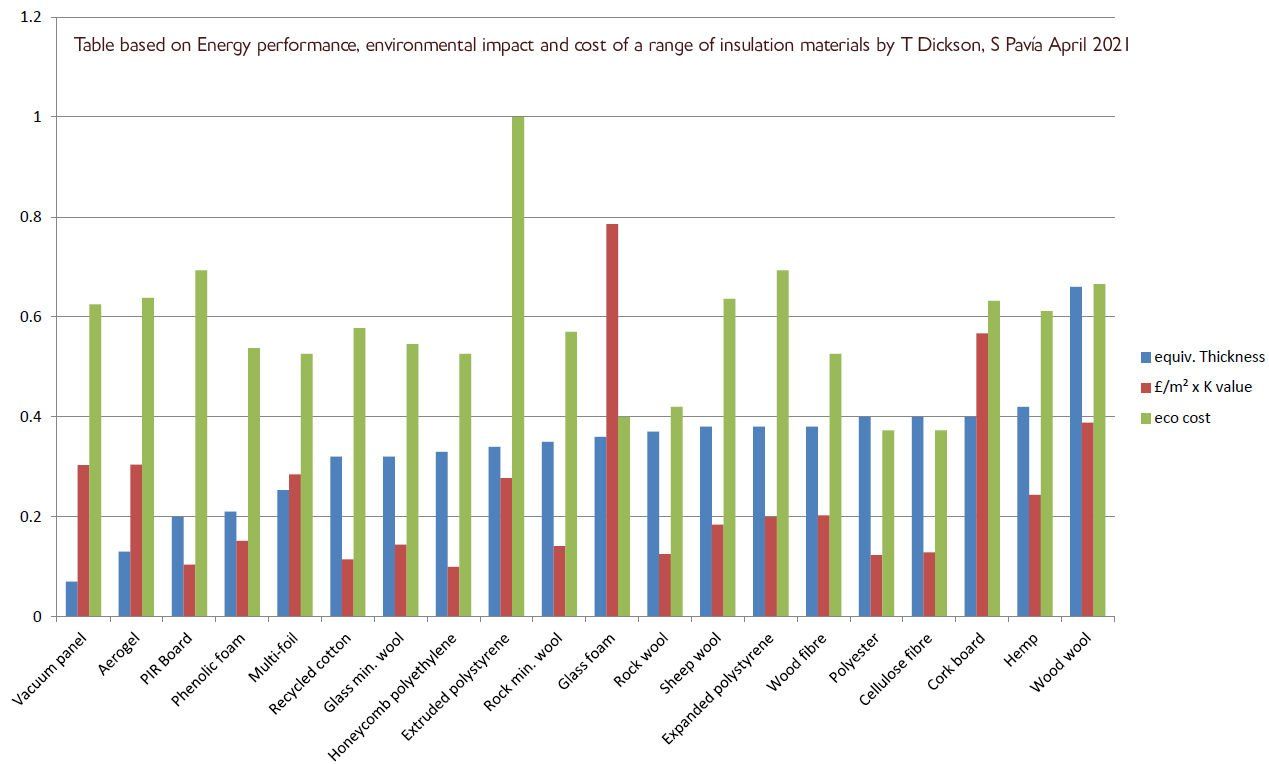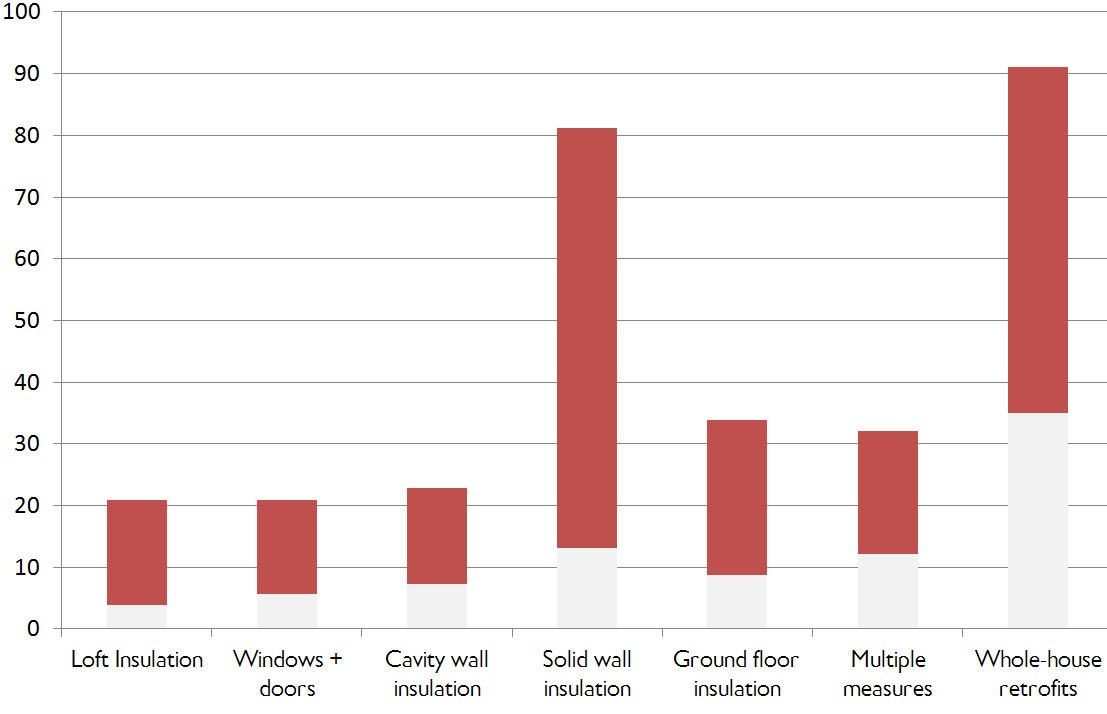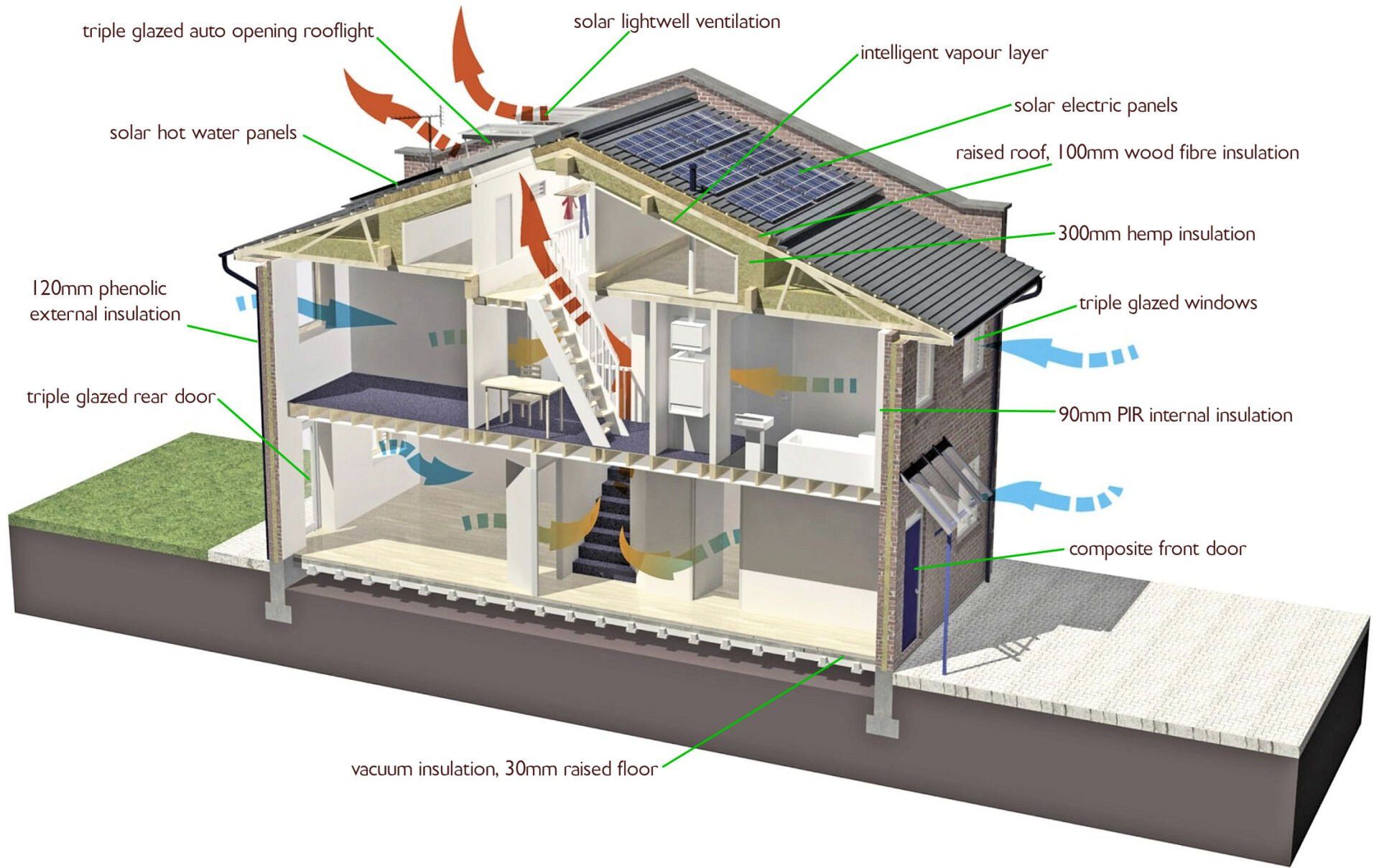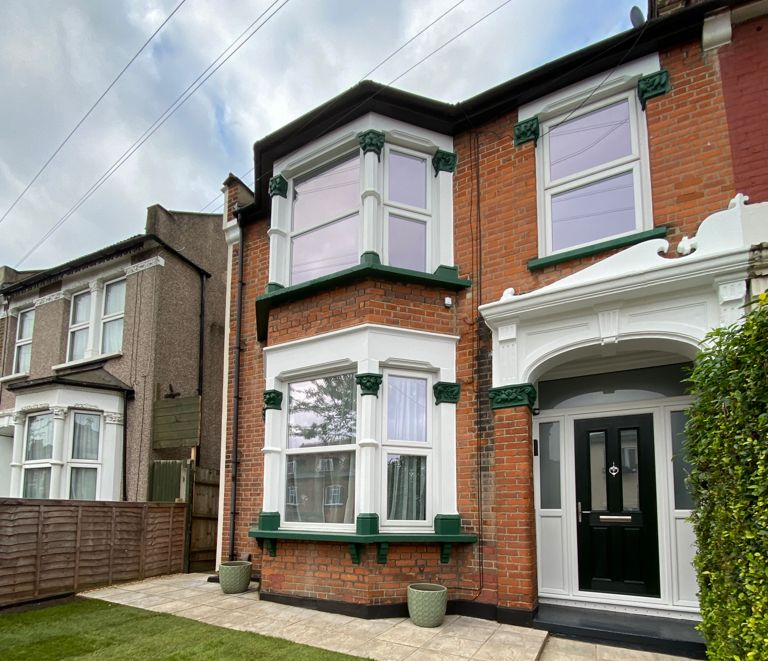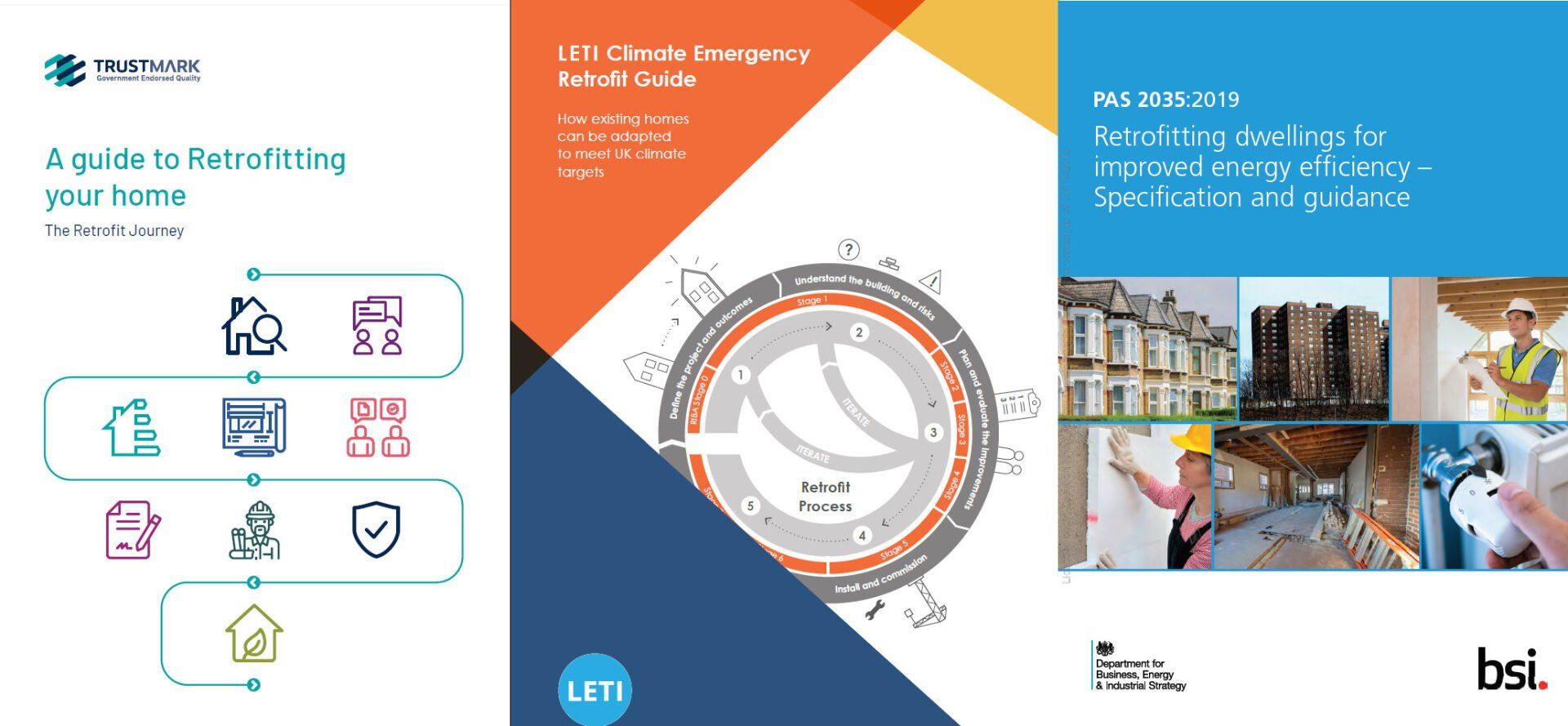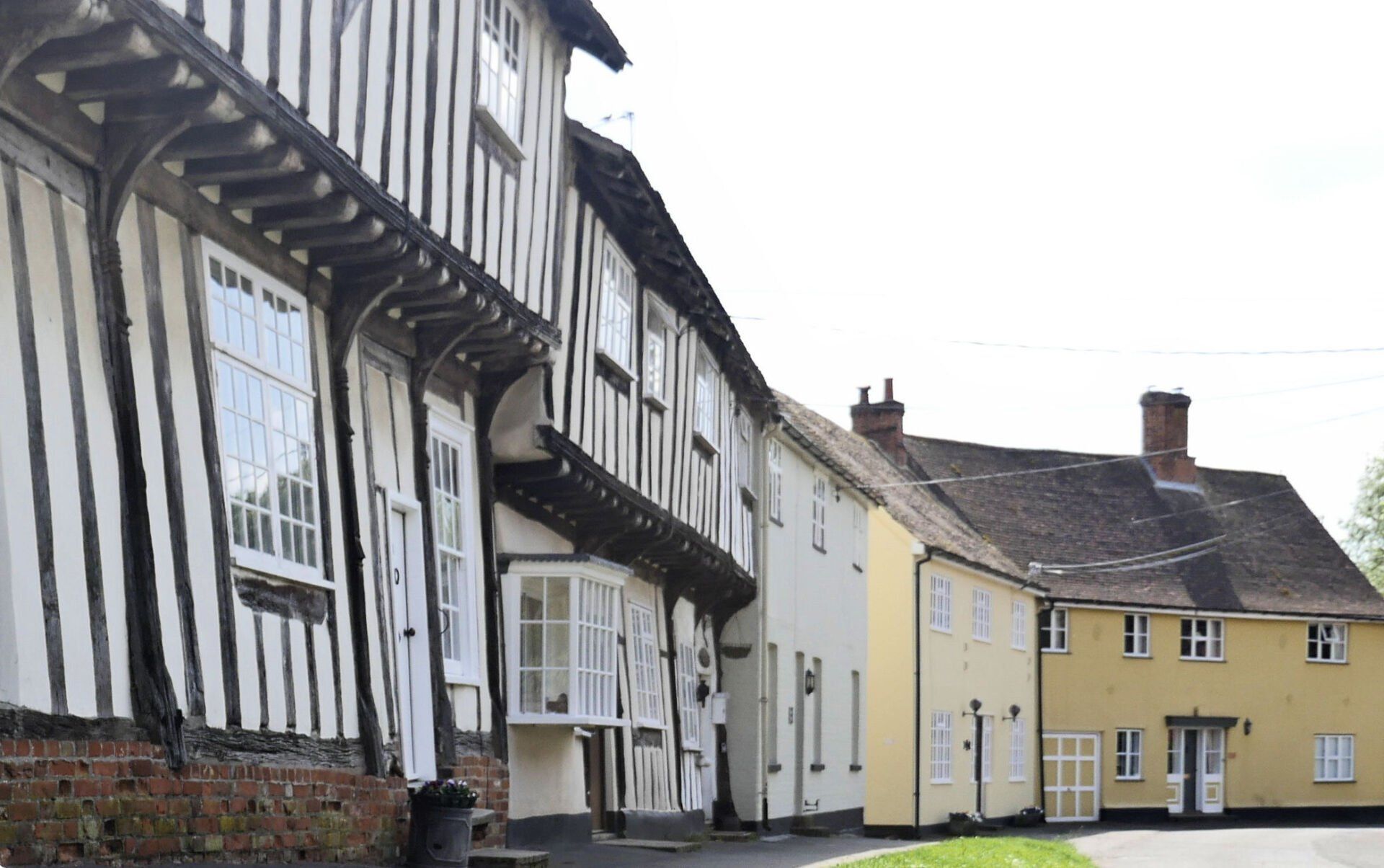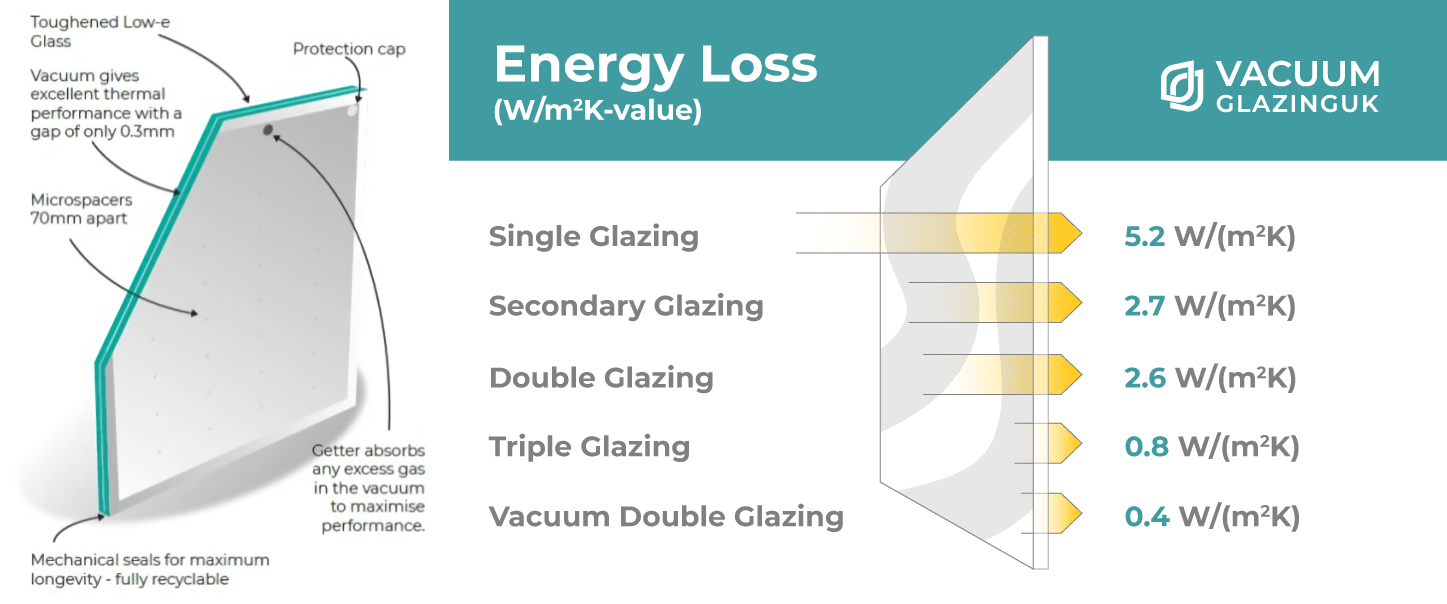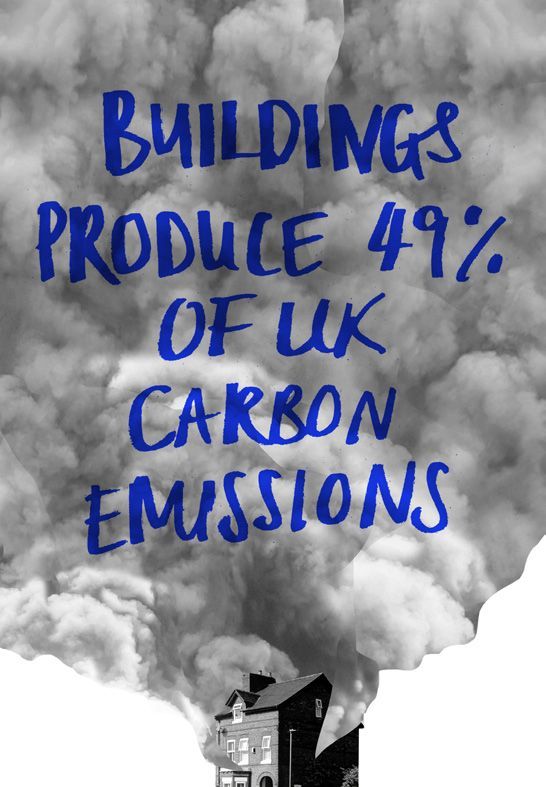South-facing lean-to conservatories can be optimised as a thermal buffer to the exterior wall and act as a passive solar heat collector, especially in spring and autumn. But using a heater in them is not a good idea! See sunspaces
How you can save energy now!
Funded by Suffolk's Public Sector Organisations, Suffolk Energy Assessment can come and assess your home - click here
| How much energy am I using? | per hour | per 10 mins | per hour | per 10 mins | ||
|---|---|---|---|---|---|---|
| Electric shower (9000 W) | £3.06 | 51p | Vacuum cleaner (900 W) | 31p | 5p | |
| Immersion heater (3000 W) | £1.02 | - | Dehumidifier (500 W) | 17p | - | |
| Kettle (3000 W) | - | 17p | Towel rail (450 W) | 15p | - | |
| Tumble Dryer (2500 W) | 85p | 14p | Plasma TV (350 W) | 12p | 2p | |
| Electric heater (2500 W) | 85p | 14p | Fridge-freezer (300 W) | 10p | - | |
| Oven (2100 W) | 71p | - | Freezer (150 W) | 5p | - | |
| Washing machine (2100 W) | 71p | - | Fridge (150 W) | 5p | - | |
| Oil-filled radiator (2000 W) | 68p | 11p | Heating blanket (150 W) | 5p | 1p | |
| Hairdryer (2000 W) | - | 11p | Desktop computer (140 W) | 5p | 1p | |
| Hob (2000 W) | 61p | 10p | Games console (120 W) | 4p | 1p | |
| Grill (1500 W) | 51p | 9p | LCD TV (120 W) | 4p | 1p | |
| Iron (1500 W) | 51p | 9p | Laptop (50 W) | 2p | - | |
| Toaster (1000 W) | - | 6p | TV box (40 W) | 1p | - | |
| Microwave (1000 W) | 34p | 6p | DVD player (40 W) | 1p | - | |
| Electric mower (1000 W) | 34p | 6p | Extractor fan (20 W) | 1p | - | |
| Vacuum cleaner (900 W) | 31p | 5p | Broadband router (10 W) | 1p | - |
Thinking about ways to save money and the planet
Some things need doing even before installing a heat network. Saving energy is probably the most important. There's
Get in touch by emailing info@heatingbildeston.uk or telephoning 01449740876 to see if our volunteer team can advise you. See news for more.
Basic ideas - DIY energy saving
According to the Energy Saving Trust, "Draught-proofing is one of the cheapest and most effective ways to save energy – and money – in any type of building."
One source is here. They also have a rather good house energy audit you can fill in.
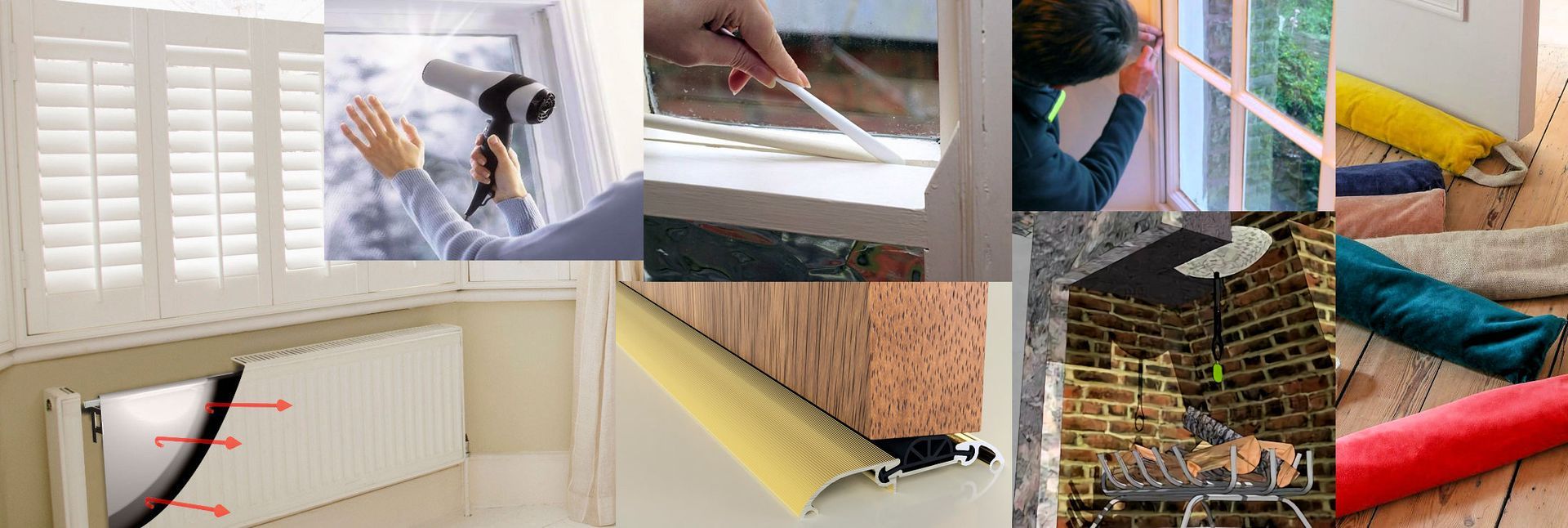
Your energy supplier
According to Which? cheap energy deals have disappeared over the last several months so it's not a good time for most people to switch energy provider.
Replace light bulbs to save £180
LED lights cost around £1.71 a year to run and last 25 years.
Install and use central heating controls and save £75
Put on a jumper rather than turning up the heat.
Cooking with a microwave uses up to 90% less energy than an oven
As long as they're suitable for what's being cooked.
Low Cost - Secondary glazing
Cheaper than double glazing and ideal for historic building conservation areas. You get what you pay for, with better performance coming at a cost, although magnetic strip plastic glazing claims to equal double glazing. There's polystyrene, cheapest but yellows with age, acylic, doesn't yellow but is brittle and Polycarbonate, most expensive and very tough. Links - Ipswich Easyfix The Plastic People the Eco Experts
Thermal blinds, shutters and curtains
Masses to choose from, but they need to be sealed all round to be effective.... links - blinds, shutters, curtains
Buy an energy efficient appliance
Although a clothes dryer is a better idea than a tumble dryer.
Retro-fitting - Buying improvements
We're now getting beyond low cost, and there are a lot of caveats here. Link - reduce heat loss
Find out if you could get energy efficiency grants or free cash
Which insulation?
Glass foam is very expensive but is a structural material, Aerogel is viable if bought from China and Cellulose fibre is the cheapest and greenest but you need quite a lot of it. PIR board isn't the greenest but has the best cost/performance. Insulation types vary massively; some can't be used externally, some absorb water and some need special handling. Information varies but here's some links, Greenspec Wikipedia. Harder to find are comparison prices and environmental qualities.
Some actions are more worth it than others, according to Leeds Sustainability Institute, Demonstration of Energy Efficiency Potential, 2021,
Solid wall insulation is surprisingly beneficial but difficult to do well. Retrofitting is better still, complex but well worth it we're told.
Retrofitting
Retrofitting is the whole house approach to energy conservation. It can be costly, but it adds to the property value, is holistic and is the most efficient way of reducing greenhouse gases, providing comfort and saving money. Here's an example, a 1990s terrace house retrofitted by Penoyre & Prasad, architects.
Retrofitting or conservation?
Extensively upgrading our houses is really about saving the planet. The UK is legally bound to a target (Climate Act 2008) to reduce carbon emissions by 80% of 1990 levels by 2050. And heating buildings is 30% of the emissions total. That means every single house has to improve by something like 25%. Or, more likely, many are going to have to be very energy efficient.
There's already a standard that goes beyond PAS 2035 called EnerPHit, based on the ultimate low-energy building standard, Passivhaus. It can mean efficency is so good that central heating is not required at all.
But with conservation planning inspectors resisting the use of triple glazing and arguing for more modest approaches, there's a growing tension between conservation and retrofitting that will probably intensify as the climate emergency becomes ever more desperate. While there's no doubt retrofitting has to be not just fabric-first but whole life costed and not an excuse to rebound and have higher indoor temperatures, it's also true that hanging onto the past unreasonably could cost us a planet out of control. See our blog for more debate. There's a good guide to retrofitting your home available here.

